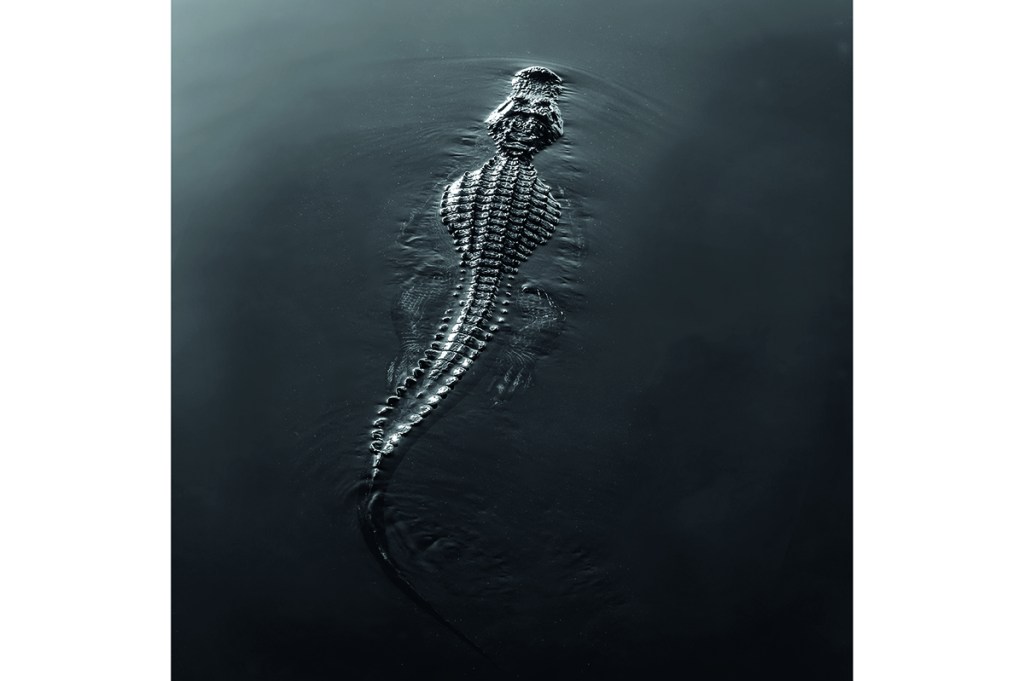When the mugginess of a northeastern summer begins to oppress your spirits, there’s only one thing to do: convince yourself the grass is greener — or safer, at least — on your side by heading to a place where people have it even worse.
For me, that was the edge of the Everglades in August, where not only does standing outside for more than a minute challenge the fortitude of your every pore, but an alarming number of the residents want to kill you.
Invasive cane toads ooze sticky white goo that’s lethal to pets and highly toxic to humans. Venomous rattlesnakes slither undetected through dense vegetation. There are even black bears — who knew bears lived in Florida? — that can be troublesome. And while I was in no danger of having a massive iguana fall on my head — that happens when the temperature drops and the cold-blooded creatures lose their grip on the trees — it did happen to be Florida Python Challenge® Week (“an exciting conservation effort” to rid the state of these non-native constrictors) when I chose to visit.
I was blissfully oblivious to all these Florida facts when I planned my trip. It was for the alligators that I came to Naples — more specifically for catching alligators with “Ray the Trapper,” who makes relocating the beasts his specialty as an independent trapper for the Florida Fish and Wildlife Conservation Commission.
Outside my hotel I see a tall, sturdily built figure in tactical pants with lots of pockets, a “duty belt” of sorts and several occupied knife-sheaths. I wonder what the SWAT team is doing at my unassuming lodgings at 9:30 a.m. on a Thursday, until I notice “ALLIGATOR TRAPPER” emblazoned on the back of his shirt.
Ray is busy telling a couple of European tourists eager to see alligators where to go. He greets me with a hug, then, in his laid-back and friendly manner, gives some straightforward instructions. As I climb inside his truck, the backseat and middle console laden with boxes and tools of the trade (and more knives) he warns me: “Don’t put your fingers in anything. You might not like what comes out.”
Before I left for Florida, my mother, evidently having seen snippets of Swamp People, pleaded with me to be careful. “I’m serious,” she said. “What if you fall out of the boat or something?”
Mama would be relieved to learn that instead of gripping the sides of a rocky airboat and gliding through gator-infested waters, I begin learning Ray’s trade inside an upscale, gated community. Safe as can be — minus the alligators.
After making it past security — Ray is a regular and welcome visitor of many such compounds — we take our station beside a manmade pond with an elegant “Beware of Alligator/Please Do Not Feed the Wildlife/No Swimming in the Lake” sign sticking out of some mulch next to a manicured palm tree. Ray uses a monocular to scan the water, then says laconically, “There he is,” slowly pointing across the water to what looks like a lump of plant matter to me.
Ray informs me that 99 percent of Florida neighborhoods’ water features aren’t natural, and the lines that run underwater to work the decorative fountains for the delight of condo-dwellers further complicate the already formidable challenge of wrangling an armorplated, thousand-pound leftover from the dinosaur age, with eighty-four teeth and a bite force of 2,000 PSI.
To live-capture an alligator, you see, you cast a “huge-ass hook” into the water, snag the creature, then “pull like a bull.” Ray flings his huge-ass hook with the mastery of a Byzantine soldier launching a trebuchet; it sails through the air for several seconds, then kerplops precisely where he intends it to. (Later, during a lull in the action, Ray let me have a go at throwing “the kitchen sink.” It landed about six feet in front of me, sank and collected what appeared to be moldy seaweed from the Dagobah system.)
There’s more to it than being a good shot. There are the overhanging trees and the tangly, jungly stuff that is the Sunshine State’s inescapable mise-en-scène to consider. It wouldn’t do to have your three-pronged, barbed hook get caught in the Spanish moss. And you can’t drag your angry, thrashing gator in just anywhere; if the water’s edge is steep and rocky, you’ll fall in and get injured — or worse. Mr. Gator himself might also get caught in the tangly, jungly stuff, or in the wires that run those fancy fountains.
A seasoned pro like Ray (eleven years in the business) avoids all that. As we observe the gator, his eyes and snout barely poking out of the water. I pepper Ray with questions.
What do you do when you catch it?
“Throw it over my shoulder and carry it to my truck!”
What does a tail whip feel like?
“Like getting hit by a baseball bat.”
Silence for a minute. My gaze drifts off. I wonder if the pair of fit seniors in their gleaming orthopedic sneakers at the tennis court yonder realize a wild, carnivorous predator is lurking mere yards away. Perhaps elderly snowbirds take to Florida to increase their chances of a quick death, rather than prolonged suffering in a Midwestern nursing home.
I come back to my senses as Ray relays a story of how easy it is to miss a gator and how he once found a cunning nine-foot monster in a twelve-inch culvert. “He was hiding in there,” he chuckles as I check my six, realizing I’d already forgotten Ray’s number one rule: “Always be aware of your surroundings.”
A woman emerges on her screened porch above our heads. She tells us where she’s seen the gator. Ray asks for more details, making mental notes on the creature’s habits. He tells me how he’ll also look for “belly slides and tail drags” in the earth. Thinking of this as detective work — interviewing witnesses and gathering clues — adds to the suspense of the mission. Only the suspect usually isn’t a criminal. Humans move in (Naples was one of the nation’s fastest-growing metro areas last year), then consider the natives “nuisances” when they dare venture into the ideal habitats the invasive people construct.
We toss some marshmallows to the alligator (raw chicken ripening in the sun and maggots in the truck bed is our backup bait), but he never comes to within convenient striking distance. We wait a while longer, then pack up our gear and head to the next call.
The next day, Ray arrives to pick me up with five live gators already in the coffin-like box in the bed of his truck. We head first to another gated community, this one with a private golf course, where we repeat yesterday’s exercise with added amusement: a man steps out of a golf cart and shows just how out-of-touch people who play golf before noon on a workday really are by asking us if, with our hooks and poles, we are hunting deer.
We leave the inoffensive gator to enjoy his soak (he wasn’t bothering anyone), and head to the rear parking lot of a nearby Lowe’s to meet up with Ray’s right-hand man, Kenne, and see the python he has caught for the Python Challenge. Kenne tells of the time he and Ray cemented their friendship: he helped Ray remove “a big ol’ Florida speed bump” at 3 a.m.
“He’s the legend,” Kenne says of Ray as a small crowd of Lowe’s customers, curious about the huge, dead snake, starts to form.
Kenne sends us on our way with a live possum in a trap, and as we travel along, Ray explains that I’m getting a good sense of the typical day-to-day routine that he repeats to track and capture a gator.
“How much does a gator pay, if you don’t mind me asking?”
“$30.”
I let that ruminate.
“When I catch it!” Ray clarifies. “Half the time I lose $30 worth of line!”
“But then the FWC reimburses you after you catch the gator for all the hours it took to get it, right?”
Wrong. Ray’s main source of income is from his private business — trapping non-protected wildlife (raccoons, birds, coyotes, etc.). The only pay beyond the $30 that Ray gets for an alligator is from Kelvin Townsend, a fifth-generation Floridian who makes his living breeding gators and guiding gator hunts on private land, as well as selling gator meat to restaurants.
Kelvin’s remote homestead lies ninety minutes northeast of Naples. His views on life are as evident as his wide cowboy hat and as genuinely formed as the calluses on his gnarled hands. We release Ray’s captures into a pond on the fenced-in gator farm, then Kelvin drives us on his side-by-side through the most still, mysterious, enchanting forest, teeming with bananas and 2,800 largely unseen gators.
I meet Ray for one last chat before I head to the airport. Why go to so much work for a measly $30 and the trouble of driving three hours to release the gators?
“I like helping people,” the amiable “Uncle Ray,” as many people — myself now included — know him, says with a shrug.
A woman with two little dogs makes a fuss over Ray. “I’ve never met one of you in real life!” she fawns. And it’s justified. Each year, thousands of people apply for the prestigious alligator trapper position, but only a handful are chosen.
“God bless you!” the enthusiastic woman tells Ray as she leaves.
Amen to that.
This article was originally published in The Spectator’s October 2022 World edition.


















